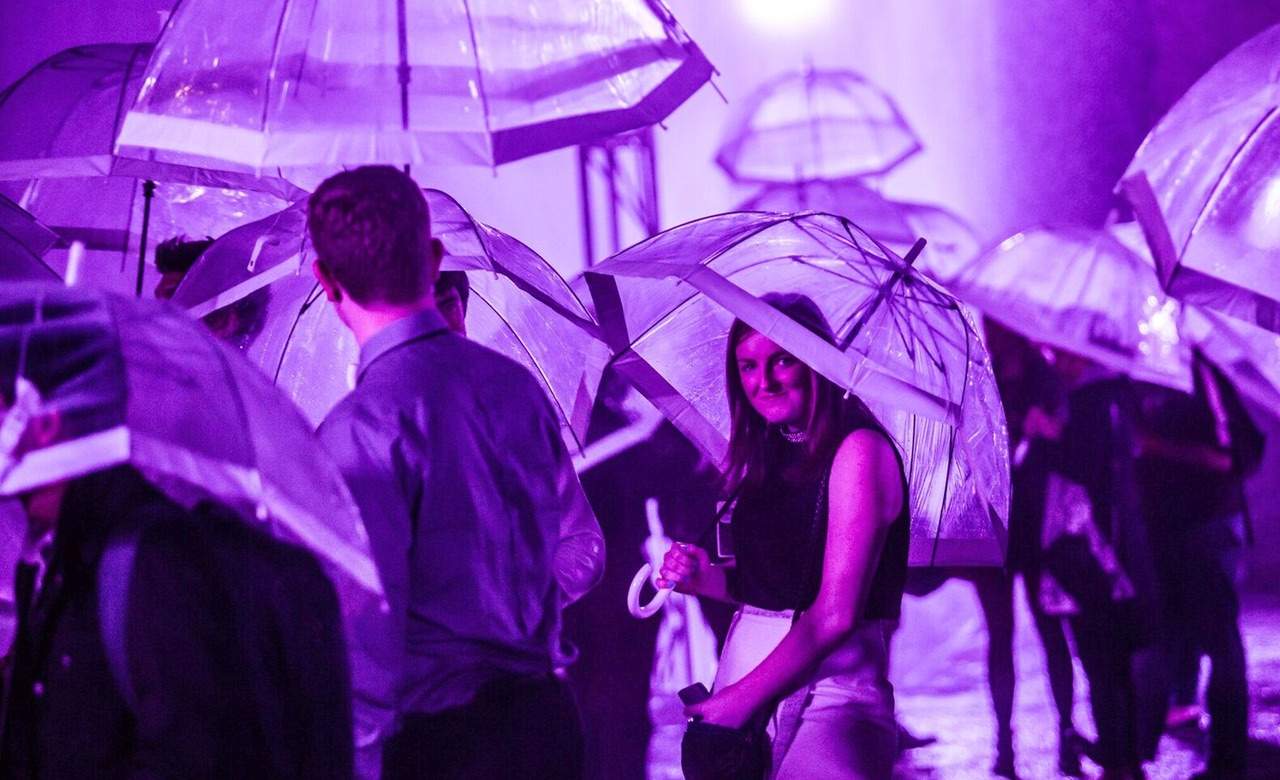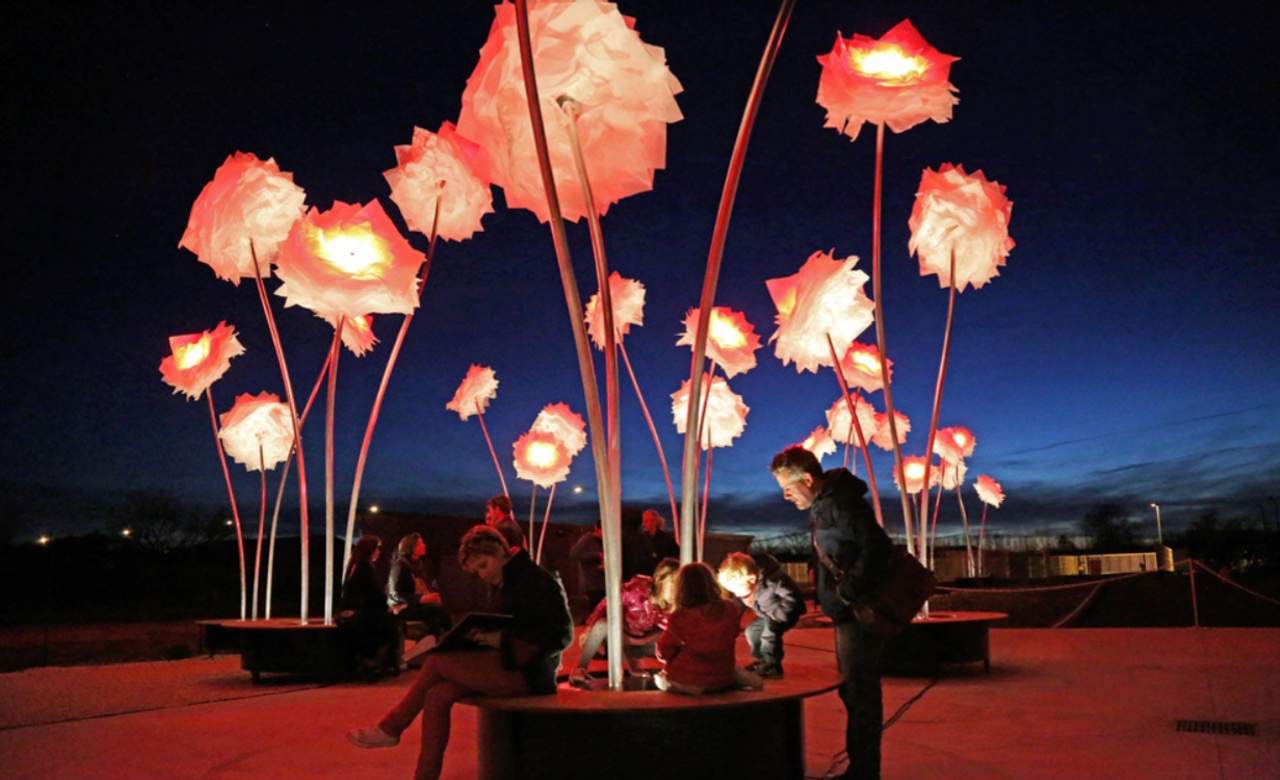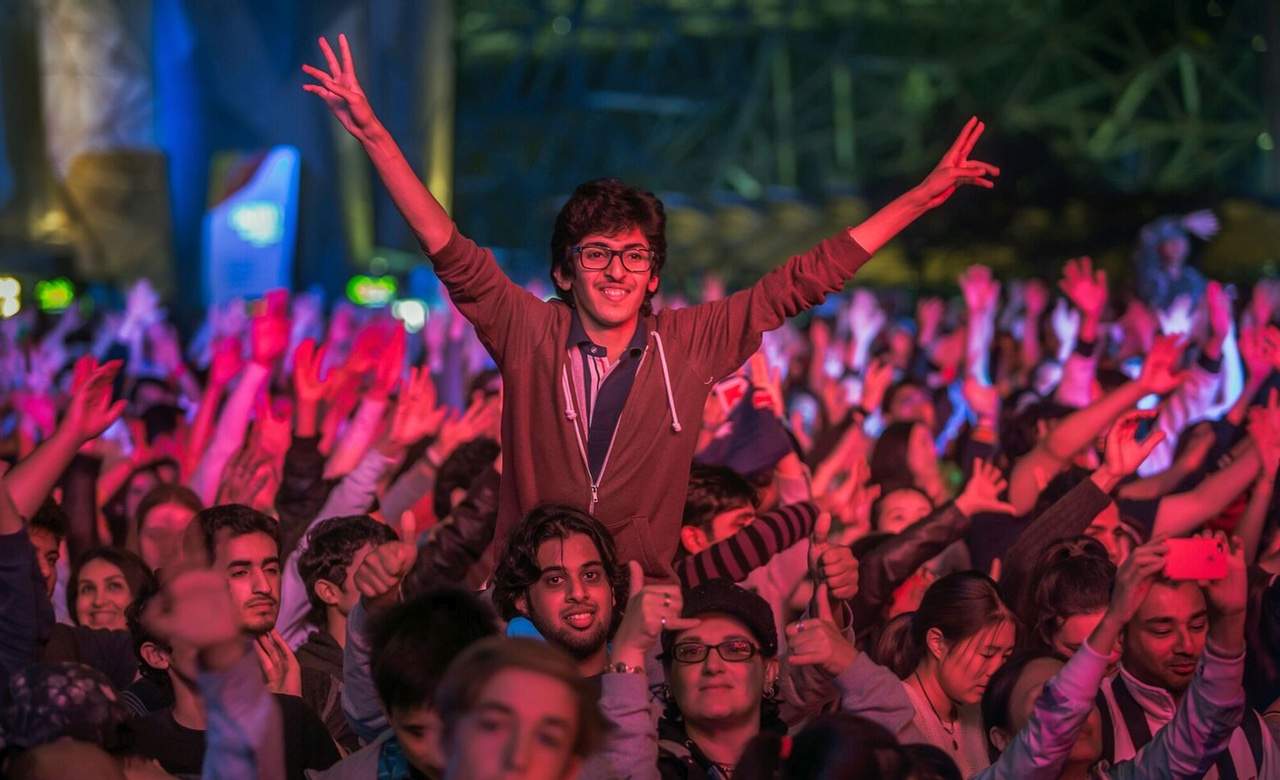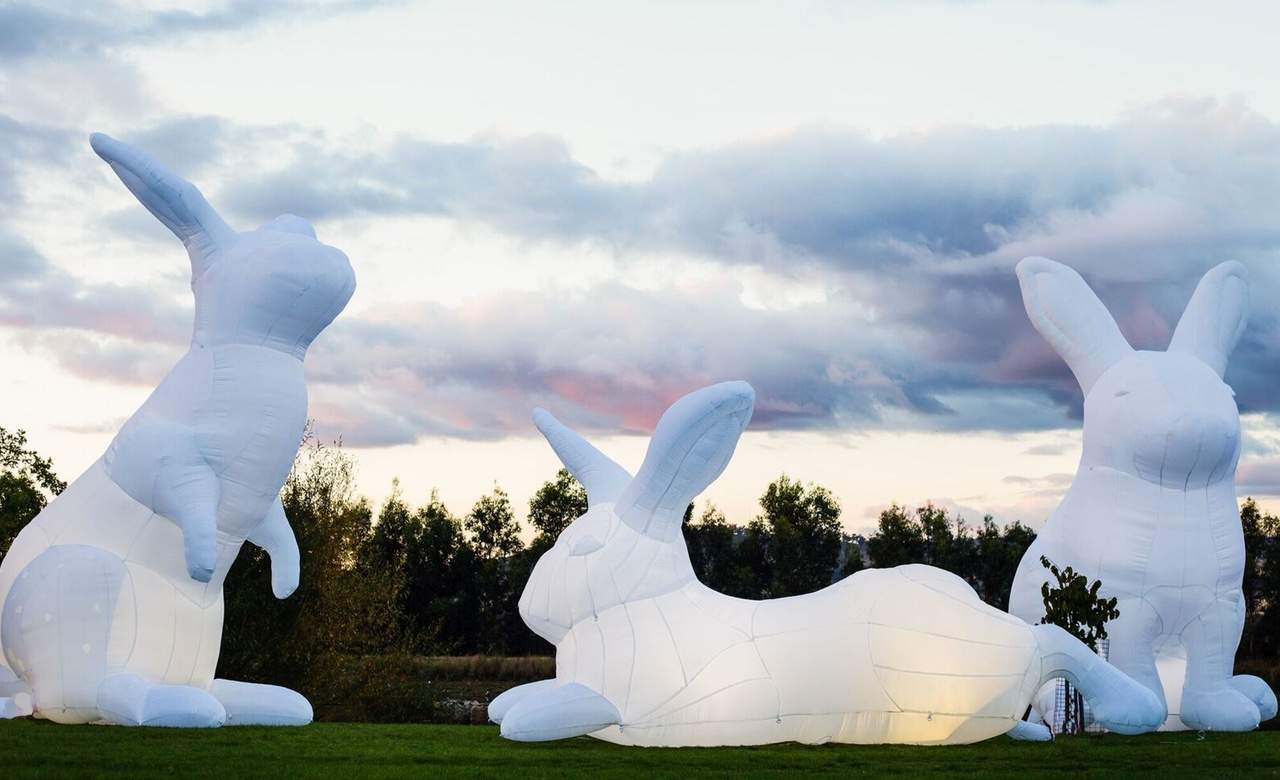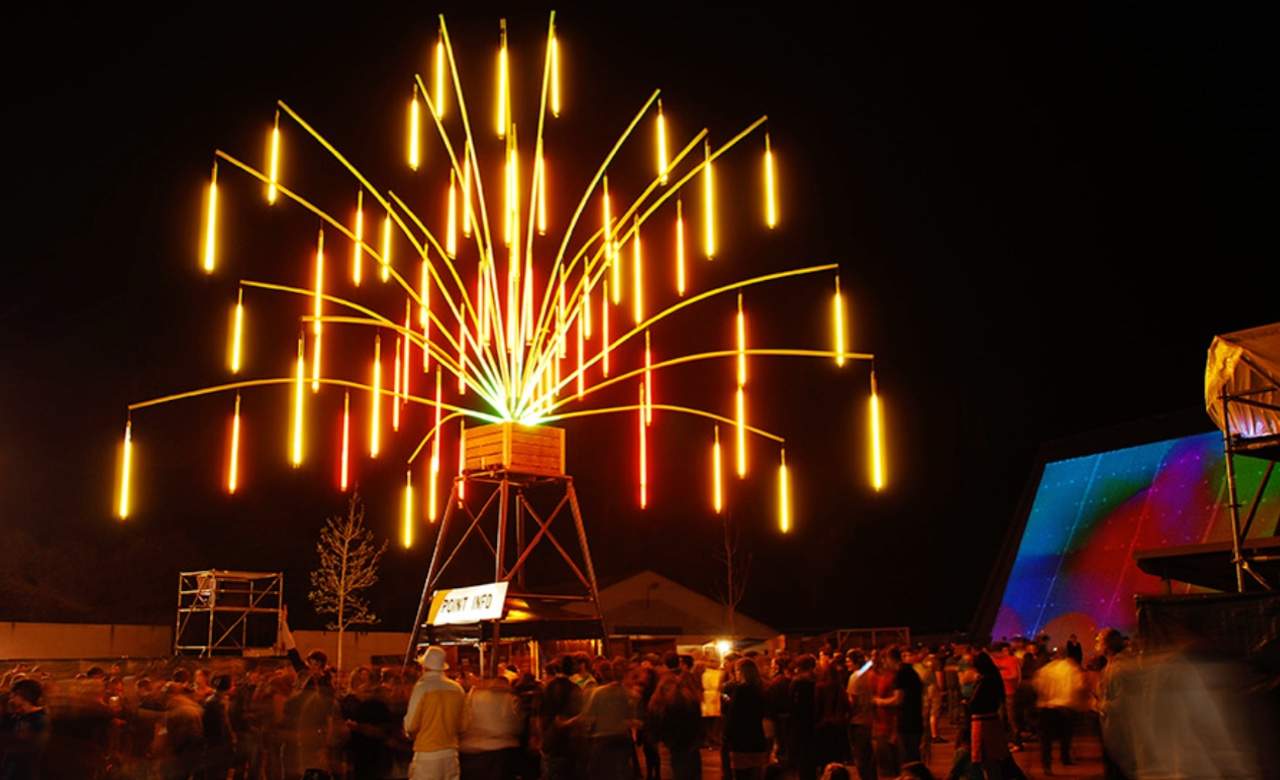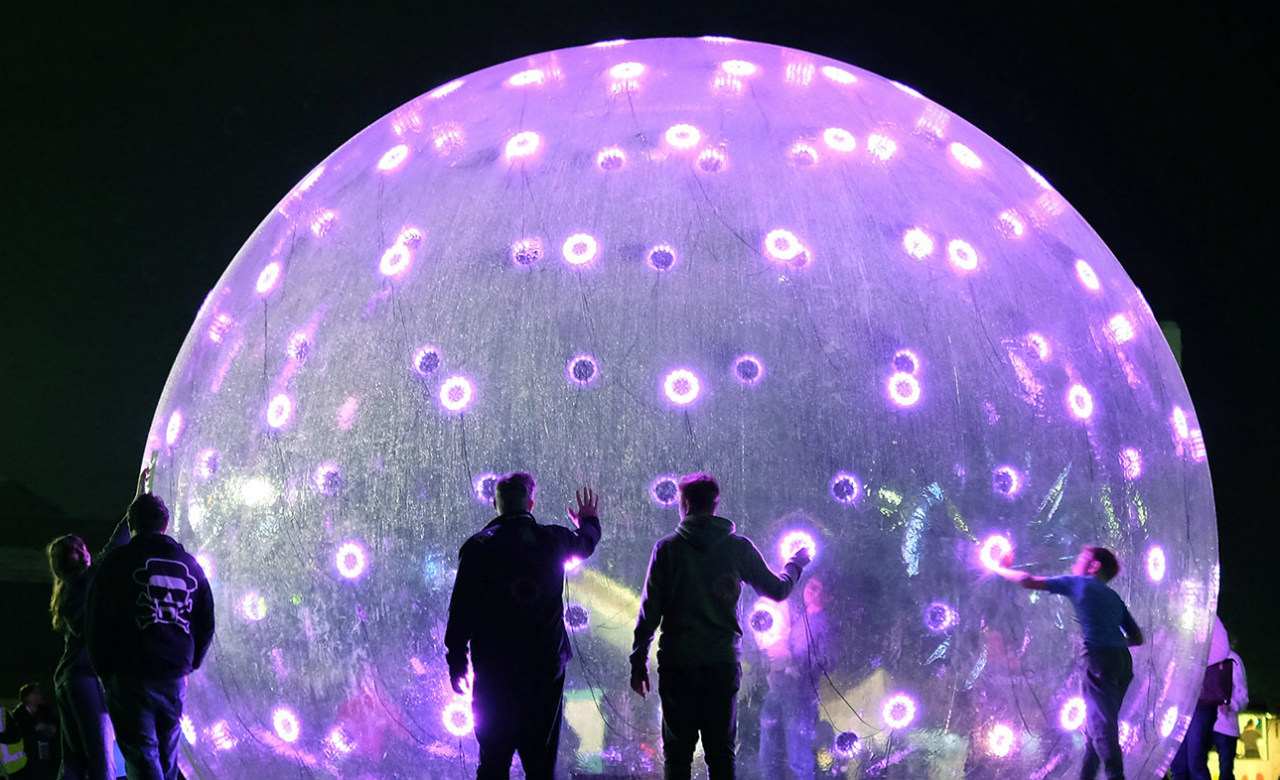The Workings of White Night: How to Run an All-Night Arts Festival in Melbourne
Pulling together a 12-hour city-wide show is no easy feat — we speak to artistic director David Atkins about how the White Night team pulls it off.
Since it first lit up Flinders Street back in 2013, White Night has quickly become one of the biggest events on the Melbourne cultural calendar. Last year, more than half a million people flocked into the CBD for a night of music, projections, installations and performances, from the spectacular to the downright strange. For Melburnians, the after-dark arts event represents a chance to see their city — quite literally — in a whole new light.
But a single night of live art requires months of behind the scenes planning. There are sites to secure, routes to plot and transport to wrangle. Managing all that — while also recruiting hundreds of artists and performers and ensuring that everything runs smoothly on the night — is no easy feat.
"There's a mountain of things that are taking place," Artistic Director David Atkins tells Concrete Playground, less than two weeks out from the main event. "The works that are being created for the program are all in various stages of being delivered. We're attending rehearsals and looking at digital content and looking at projection materials. We're looking at screens, fine-tuning some of the bands and the musicians, and looking at all of the risk and safety stuff."
It's Atkins' first year at the helm of the festival; he previously worked on major events including the ceremonies for the Vancouver Winter Olympics and the New Zealand World Cup. Still, from the sounds of things, he seems to be more or less on top of things. "Frantic isn't the world I'd use," he laughs. "But it's busy."
![]()
DESIGNING THE PROGRAM
"With something like White Night you are inheriting expectations," says Atkins of the way he approached this year's lineup. "[You have] an audience that has an understanding of what they're coming to see, and an expectation around that. So we're not going to dramatically depart from that, but then we also want to give them new things to look at, and some installations and activities that they might not have experienced before."
This year, says Atkins, there's a bit more performance and interaction than there might have been in previous years. Punters can also expect a slightly more political bent to some of the installations. "I think when you've got an audience of half a million people, it's really behoven on you to actually use that to bring some issues to attention," he says. "Not to make judgments, but to at least make people aware." Asked for specifics, Atkins points to Home Less, a projection on the exterior of St Paul's Cathedral inspired by "the dreams of homeless people", as well as Rebel Elders in Rainbow Alley which explores "ageism and perception".
![]()
PULLING IT ALL TOGETHER
Of course, it's one thing to commission the art. It's another thing to deliver it all simultaneously on the night. "As we get closer to [White Night] the focus changes and we get into the real detail," says Atkins. "We run a whole series of tabletop exercises and 'what ifs' in terms of running the control centre…we're [also] working with all the various stakeholders as we get closer in terms of event messaging for public transport, emergency services and how we interface with them."
"It's about managing a whole range of different things on the night, and being sure that we're prepared for them," he says. "You work on the basis that you want everything to run smoothly, but you need to be really well prepared, and have everyone else well prepared in case something goes awry on the night."
They even have a plan in case of bad weather. "There are lots of things that are still happening indoors, and we have safety measures to deal with inclement weather," says Atkins. "We're still in a really good part of the year, so it's not cold. And I think if you live in Melbourne and you're not prepared for the rain, then you've not lived in Melbourne very long."
![]()
WHAT NOT TO MISS
Alright, so now we have an idea of how the whole thing comes together. But the question remains: what are we actually going to get? Atkins was keen to share his recommendations for the evening, starting in the Carlton Gardens. "On the Royal Exhibition Building you've got a piece called Rhythms of the Night, which I think is going to be a really popular projection this year — the guys have gone to a lot of trouble mapping that building and I think it's going to be one of the highlights," he says. "In that same area, you've got Sonic Light Bubble which is an interactive dome, and then you've got Pixel Fruit which is an LED installation. So there's a lot up there to enjoy."
Moving through the city, Atkins spotlights Swing City on Collins Street, a never ending dance marathon featuring a 13-piece big band, ballroom dancers, vintage cars and more.
"Then you look at the southern end of the city where you've got Alexandra Gardens, and the White Knight Messenger, which is an automated puppet which involves projection, sound and performance," Atkins continues. "So that's a fantastic piece that's going to be down there, along with The Medusa, which is a huge jellyfish suspended from the trees."
Still, of all Atkins' recommendations, we reckon his best one isn't about what to see, but when. "If you haven't got kids and you can come after midnight, then that's the time to come," he says. "If you go later, you can avoid the crowds, [and] if you can spend Sunday in bed, that'd be my advice. I'd make a night of it."
